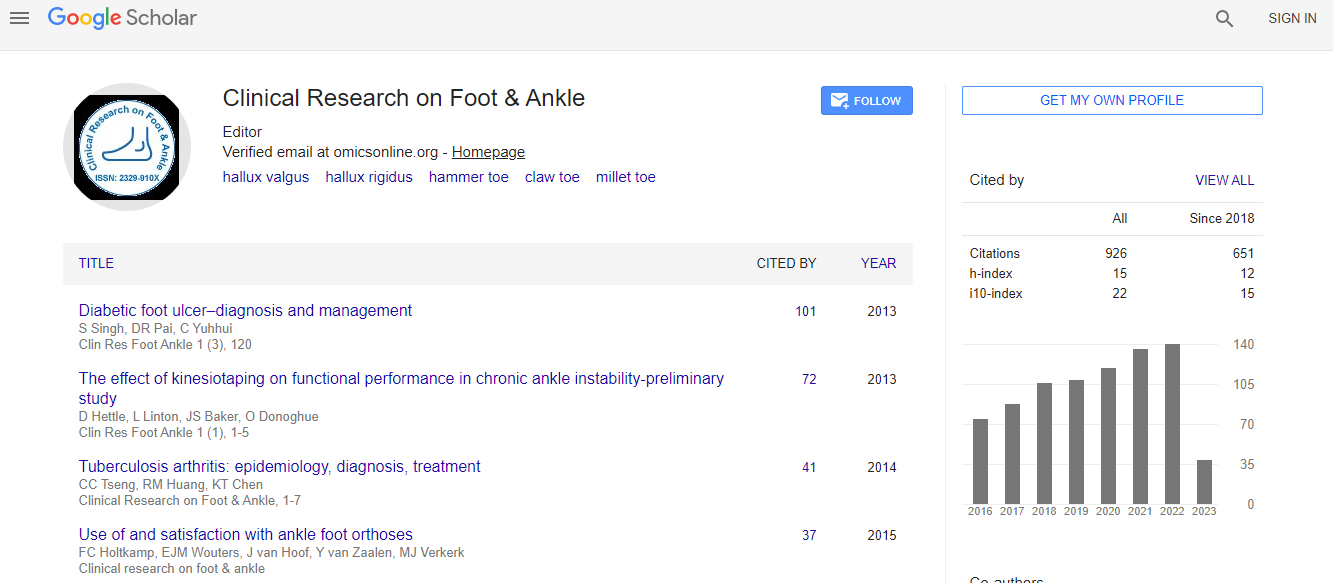Review Article
Calcaneal Fractures, Treatments and Problems
| Faik Türkmen1, Ismail Hakkı Korucu1, Cem Sever2, Gani Göncü2, Burkay K Kaçıra1 and Serdar Toker3* | ||
| 1Assistant Professor, Necmettin Erbakan University Meram, School of Medicine Department of Orthopaedics and Traumatology, Turkey | ||
| 2Assistant Professor, Mevlana University School of Medicine Department of Orthopaedics and Traumatology, Turkey | ||
| 3Associate Professor, Necmettin Erbakan University Meram School of Medicine Department of Orthopaedics and Traumatology, Turkey | ||
| Corresponding Author : | Serdar Toker Associate Professor, Necmettin Erbakan University Meram School of Medicine Department of Orthopaedics and Traumatology, Turkey Tel: 00903322236230-6141 Fax: 00903322236522 E-Mail: tokerserdar@hotmail.com |
|
| Received March 03, 2014; Accepted March 28, 2014; Published April 05, 2014 | ||
| Citation: Türkmen F, Korucu IH, Sever C, Göncü G, Kaçira BK, et al. (2014) Calcaneal Fractures, Treatments and Problems. Clin Res Foot Ankle 2:138. doi:10.4172/2329-910X.1000138 | ||
| Copyright: © 2014 Faik T, et al. This is an open-access article distributed under the terms of the Creative Commons Attribution License, which permits unrestricted use, distribution, and reproduction in any medium, provided the original author and source are credited. | ||
Related article at Pubmed Pubmed  Scholar Google Scholar Google |
||
Abstract
Calcaneal fractures are the most frequent tarsal fractures and represent 2% of all adult fractures. A high-energy trauma which causes axial loading is the most common cause of calcaneal fractures. The majority of these fractures are intra-articular. Particularly patients with displaced intra-articular calcaneal fractures must be evaluated for multiple traumatic injuries. The spine, contralateral lower extremity and the wrist fractures may accompany with calcaneal fractures.
The most common symptom of calcaneal fractures is pain. Swelling is frequently encountered. Erythema and fracture blisters are other findings. Conventional radiological images should include anteroposterior, axial, lateral and oblique views. The subtalar joint, the calcaneocuboid joint and posterior facet should be assessed in radiologic images.
Calcaneal fractures may involve extensive complications. Subtalar joint stiffness and arthritis, heel widening, peroneal impingement, implant-related problems and heel pad pain are the potential complications. The complex anatomy of the calcaneus should be well understood for assesing a calcaneal injury.
Evaluation of the radiological findings and classification of the fracture must be performed before determining the treatment method. There is a large number and variety of classification systems that have been described for calcaneal fractures.
There is a lack of consensus on treatment and operative technique in calcaneal fractures. The treatment of calcaneal fractures must be planned according to different factors such as type of trauma, classification of the fracture, skin condition and injury mechanism. No treatment, conservative treatment, open reduction and internal fixation, primary subtalar arthrodesis, delayed primary arthrodesis and calcanectomy are treatment options. Also minimally invasive techniques have developed over time. Restoring articular congruity and hindfoot morphology are the aims of calcaneal fracture treatment.
Most of recent studies show that open reduction and internal fixation has better outcome in selected patients. Good evaluation, preoperative planning and appropriate treatment bring out better results.

 Spanish
Spanish  Chinese
Chinese  Russian
Russian  German
German  French
French  Japanese
Japanese  Portuguese
Portuguese  Hindi
Hindi 
